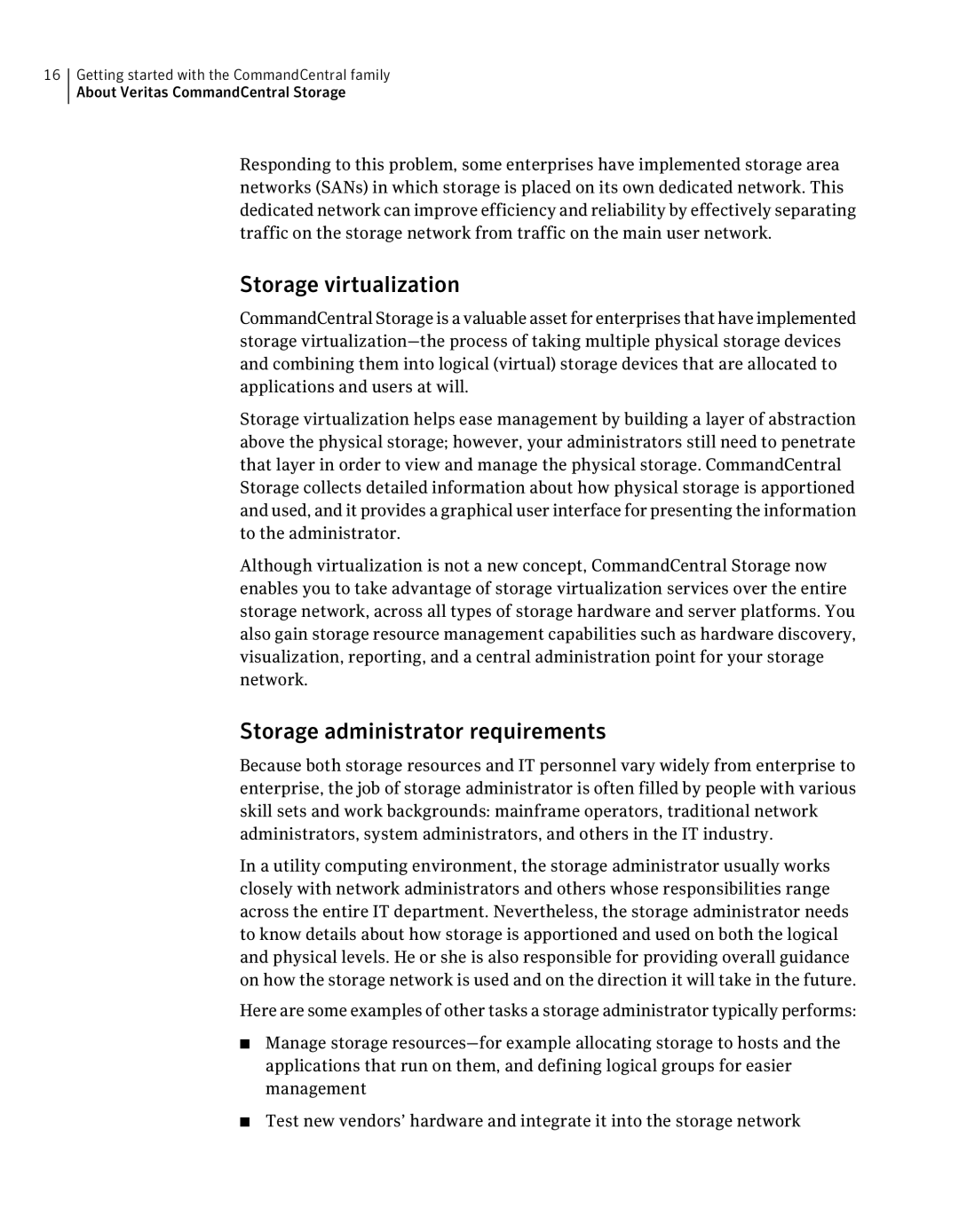16Getting started with the CommandCentral family About Veritas CommandCentral Storage
Responding to this problem, some enterprises have implemented storage area networks (SANs) in which storage is placed on its own dedicated network. This dedicated network can improve efficiency and reliability by effectively separating traffic on the storage network from traffic on the main user network.
Storage virtualization
CommandCentral Storage is a valuable asset for enterprises that have implemented storage
Storage virtualization helps ease management by building a layer of abstraction above the physical storage; however, your administrators still need to penetrate that layer in order to view and manage the physical storage. CommandCentral Storage collects detailed information about how physical storage is apportioned and used, and it provides a graphical user interface for presenting the information to the administrator.
Although virtualization is not a new concept, CommandCentral Storage now enables you to take advantage of storage virtualization services over the entire storage network, across all types of storage hardware and server platforms. You also gain storage resource management capabilities such as hardware discovery, visualization, reporting, and a central administration point for your storage network.
Storage administrator requirements
Because both storage resources and IT personnel vary widely from enterprise to enterprise, the job of storage administrator is often filled by people with various skill sets and work backgrounds: mainframe operators, traditional network administrators, system administrators, and others in the IT industry.
In a utility computing environment, the storage administrator usually works closely with network administrators and others whose responsibilities range across the entire IT department. Nevertheless, the storage administrator needs to know details about how storage is apportioned and used on both the logical and physical levels. He or she is also responsible for providing overall guidance on how the storage network is used and on the direction it will take in the future.
Here are some examples of other tasks a storage administrator typically performs:
■Manage storage
■Test new vendors’ hardware and integrate it into the storage network
